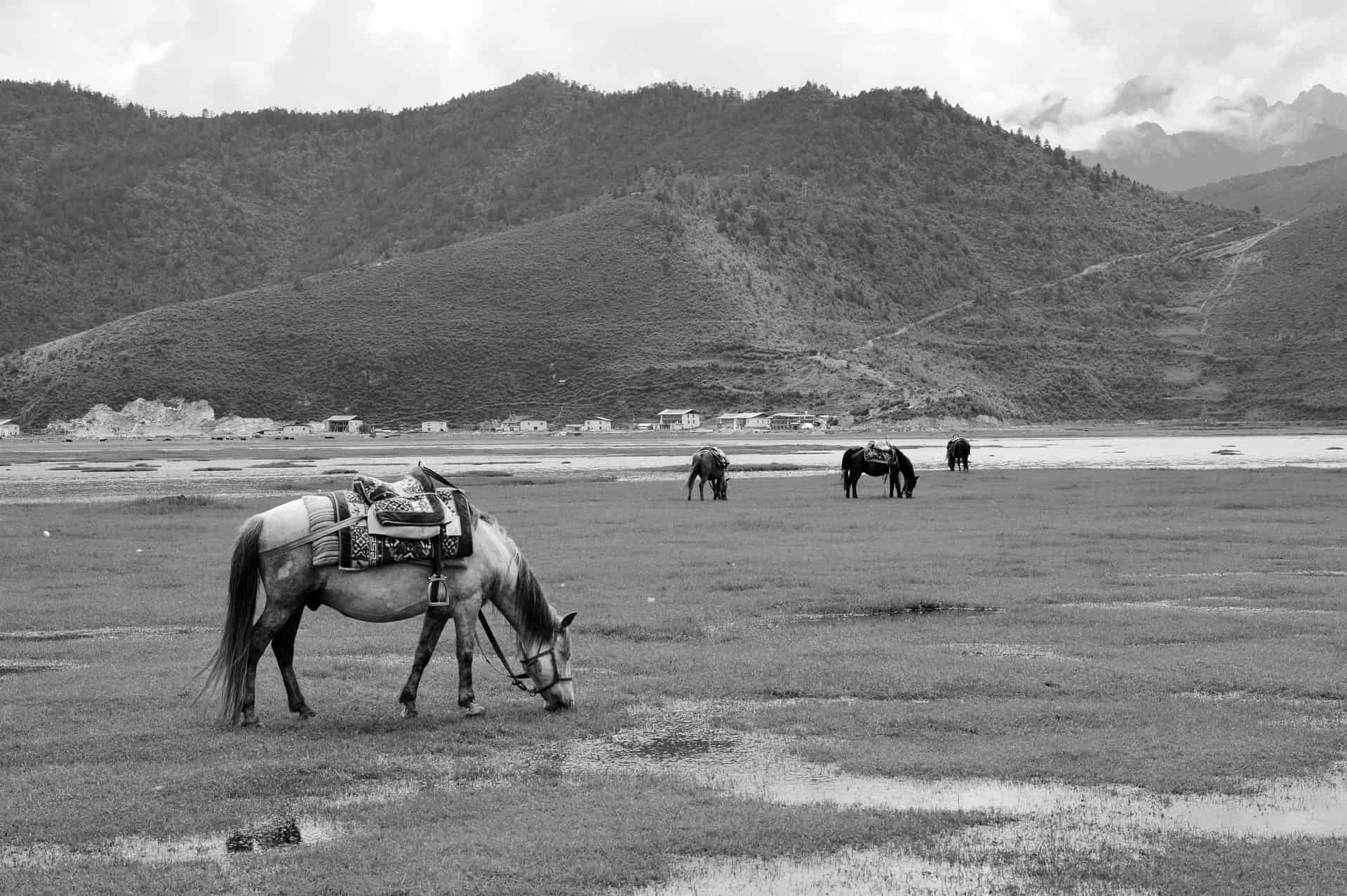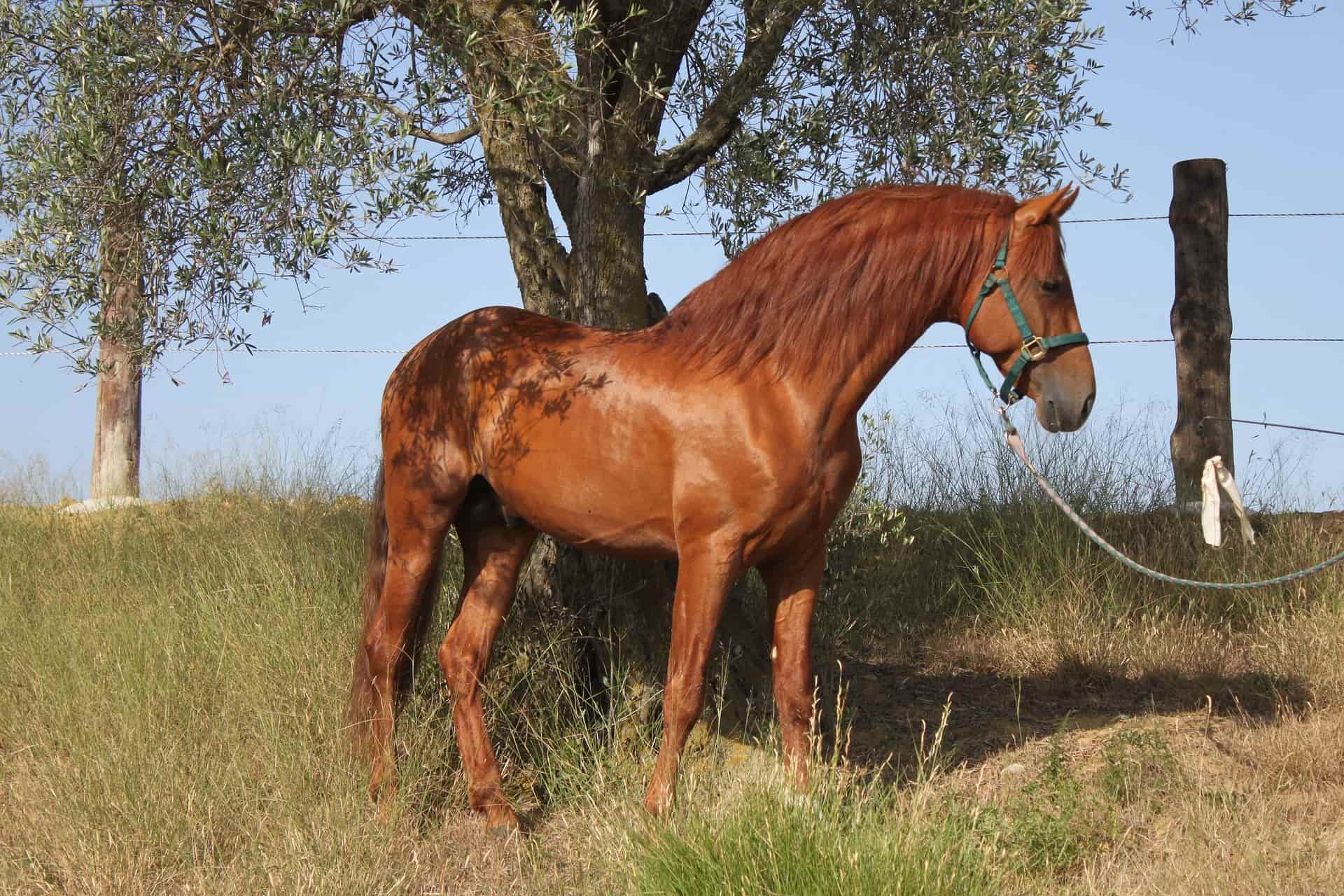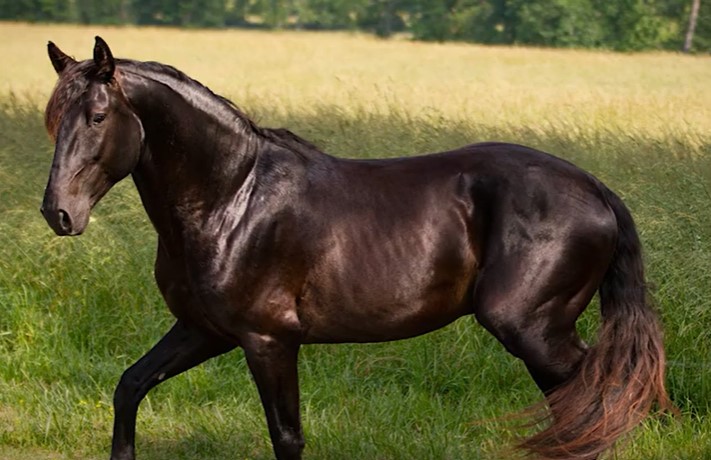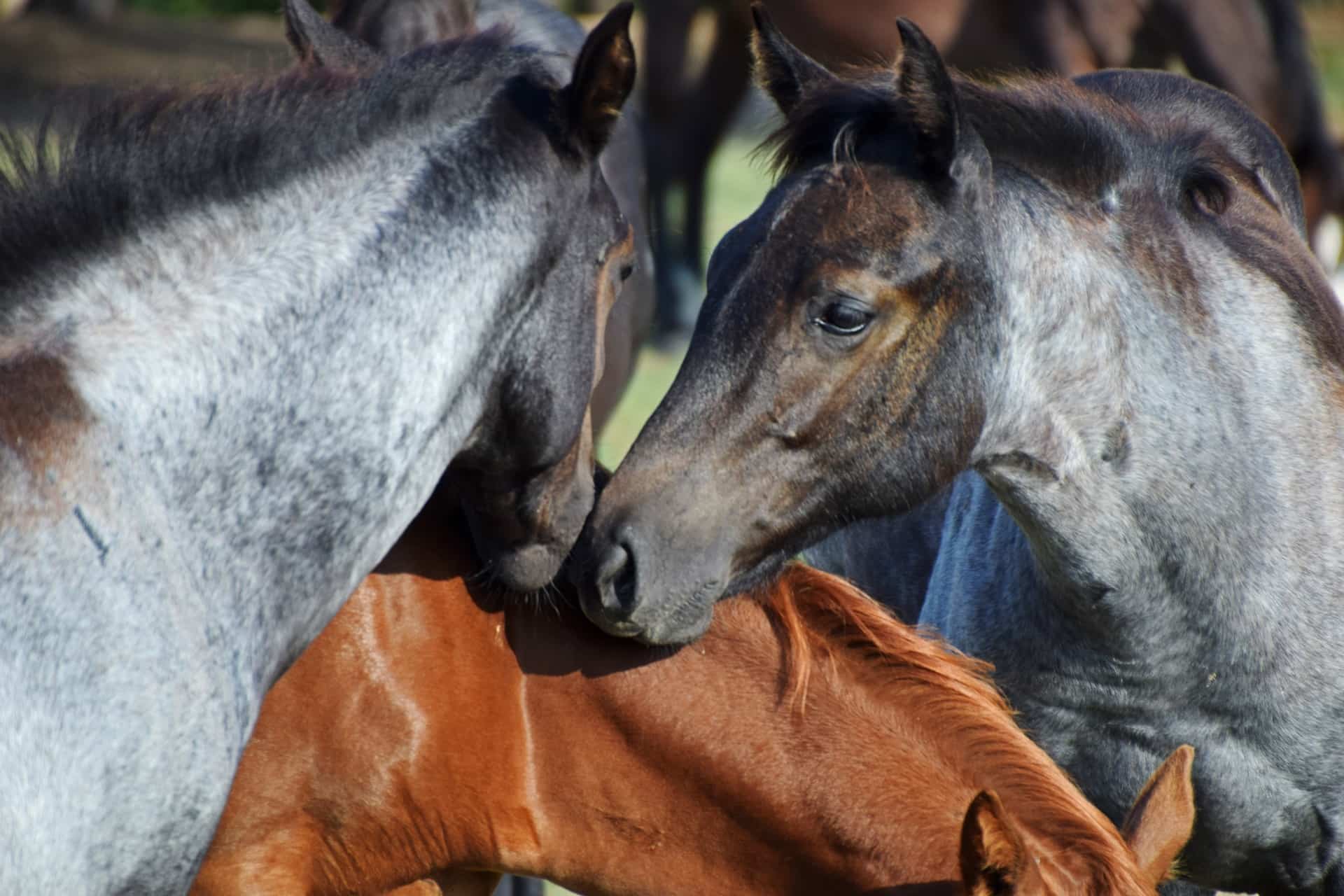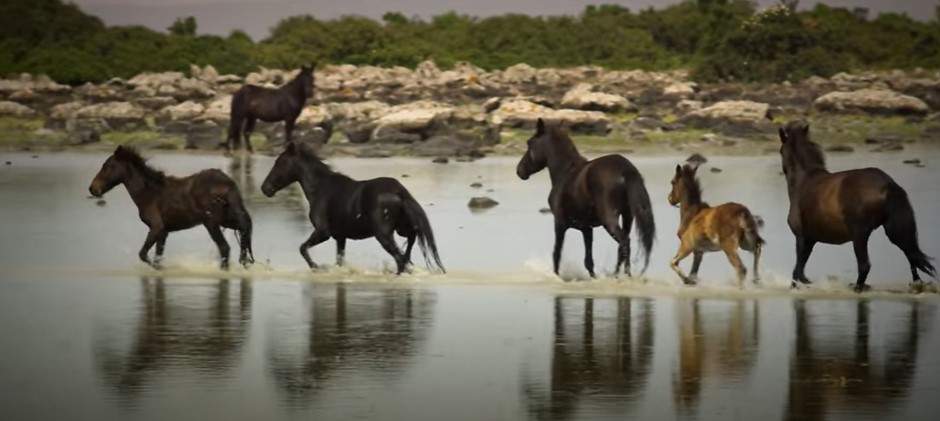China is often ranked one of the world’s oldest civilizations. In fact, the Xia dynasty which was the country’s first reign, is said to have existed between 2070 BCE and 1600 BCE.
With this in mind, it’s not surprising to learn that China was among the first nations to domesticate a lot of animals including horses. Initially, Chinese horses were bred for transportation. But later on, the natives started riding them for recreational purposes.
Want to learn more about these animals? Here’s a detailed look at the most famous Chinese horse breeds.
14 of the Most Popular Chinese Horse Breeds
1. Ferghana Horse
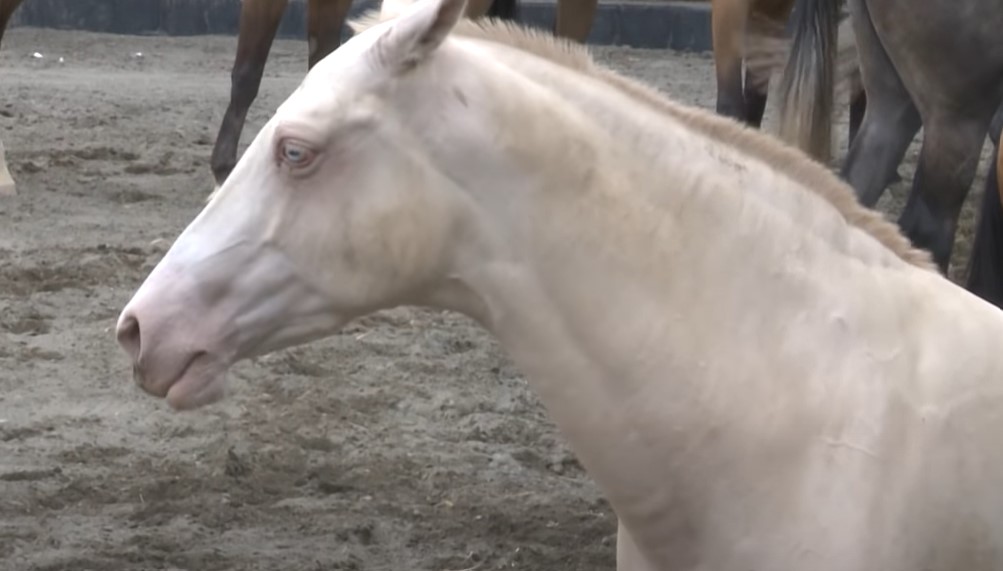
- Height: Unknown
- Weight: Unknown
- Characteristics: Straight forelegs, round barrels and massive crests
When one considers Chinese horse breeds, the Ferghana horse is one that instantly comes to mind. This is because of its rich history and myths surrounding it. For instance, it’s believed that this breed existed during the Tang Dynasty.
Legend has it that Emperor Wu of Han once commanded his soldiers to get horses from the Ferghana region.
Unfortunately, the first army of soldiers failed in their quest so the emperor sent another one. The second round proved successful as the soldiers brought back up to 3,000 horses. These are the horses that formed the foundation of the Ferghana horse.
The physical characteristics of the Ferghana breed are widely showcased in ancient art. Based on this, it’s believed that it had comparatively short legs, and strong chests.
Ferghana horses are an ancient breed that no longer exists today. But what’s even more intriguing is the fact that these horses used to sweat blood.
The cause of this was a small worm that created skin sores. The sores would then break out and produce blood. Interestingly, this condition didn’t have any effect on the mood or energy of the breed.
2. Guoxia Horse
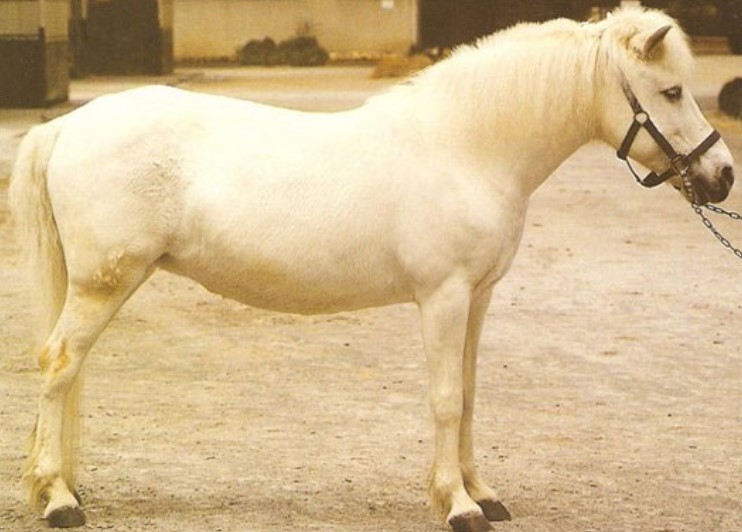
- Height: 40 inches
- Weight: 700 to 800 lbs.
- Characteristics: Tiny head with pointed ears, smooth back, sturdy neck, strong hooves and thick coats
Guoxia horse is a very small breed that comes from the counties of Jingxi, Debao and Tianyang in southwest China.
Translated from Chinese language, the breed’s name means “under fruit tree horse.” The natives gave it this name based on its role in the past.
Since it was often used in orchids to transport small baskets of fruit, it was only fitting that they named it “under fruit tree horse”.
Guoxia horses were once thought to be an extinct breed. It’s not until a herd of them were discovered in a remote section of southern China in 1981 that breeders started restoring it. Due to this, the breed is not officially recognized. However, efforts are being made to preserve it.
The Guoxia horse breed is hardy with a kind heart. Unfortunately, it’s very small so it can only be ridden by children.
3. Datong Horse
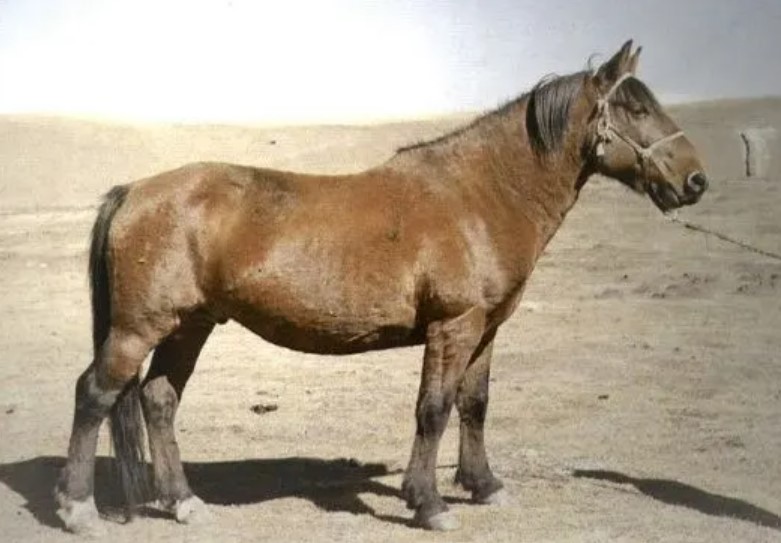
- Height: 49 to 53 inches
- Weight: Unknown
- Characteristics: A long body with a heavy weighted head, wide jaw, short neck and strong legs
This breed was developed in the Datong River Basin area that’s located in the northern section of the Qinghai Province, China. Although the specific date of their development isn’t known, many believe that Datong horses have been around for at least 4,000 years.
If you look keenly, you’ll notice that the Datong breed has a striking resemblance to the Dragon horse. The latter has been celebrated extensively through Chinese art.
One of the most notable features of Dragon horses are the two horn-like structures that stick out of their head. Interestingly, the modern-day Datong horses share similar characteristics.
Unfortunately, the “horns” are regarded as a flaw. So any horses born with them are excluded from breeding.
On a more positive note, the Datong horse breed has a gentle disposition and exceptional endurance. These traits make it perfectly suited for driving, riding and agricultural work.
4. Nangchen Horse
- Height: 48 to 54 inches
- Weight: 850 to 900 lbs.
- Characteristics: Powerful build, well-proportioned head, wide neck and shoulders and long legs
The Nangchen horse has been a purebred breed since the 9th century. However, it wasn’t until in 1994 that these horses became an official breed recognized in China and the rest of the equine world.
More specifically, Michel Peissel – a French anthropologist – is credited with introducing this breed to the western world.
This is one of the horse breeds revered for speed and strength, and has traits that are fairly similar to those of hot-blooded breeds. The Nangchen breed has learned to adapt well to its high-altitude surroundings; hence, making it useful to the local economy.
5. Xilingol Horse
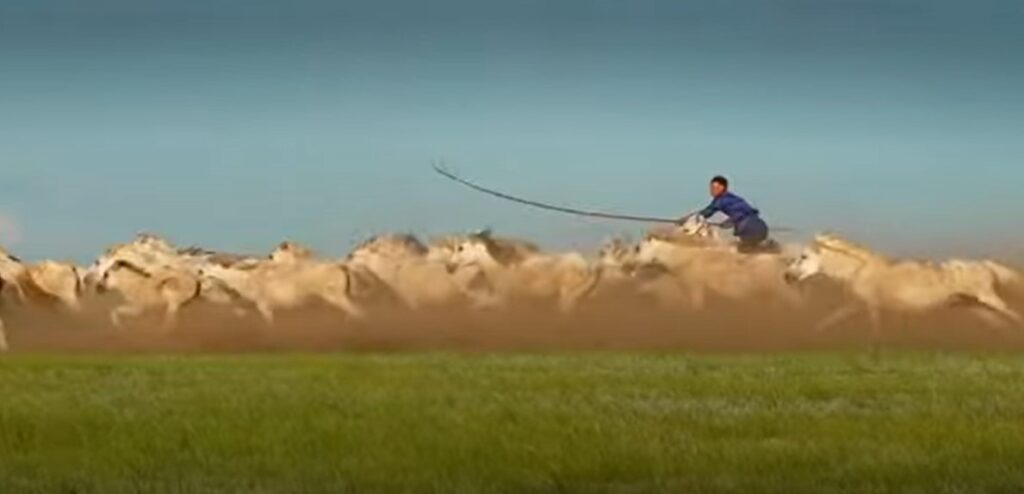
- Height: 57 to 60 inches
- Weight: Unknown
- Characteristics: Powerful and sturdy conformation and is available in all solid colors
You are most likely to find Xilingol horses roaming in the central areas of Inner Mongolia. They are one of the most recent breeds, having been produced in the 1960s.
In fact, this breed was developed by crossing the Akhal-Teke, Russian Thoroughbred, Chinese Mongolian and Sanhe horses. Shortly after, the bloodlines of the Kabarda and Don were also introduced into the breed.
The Xilingol horse breed has an average height of 60 inches and comes in solid colors. It excels in recreational riding and draft work.
6. Yili Horse
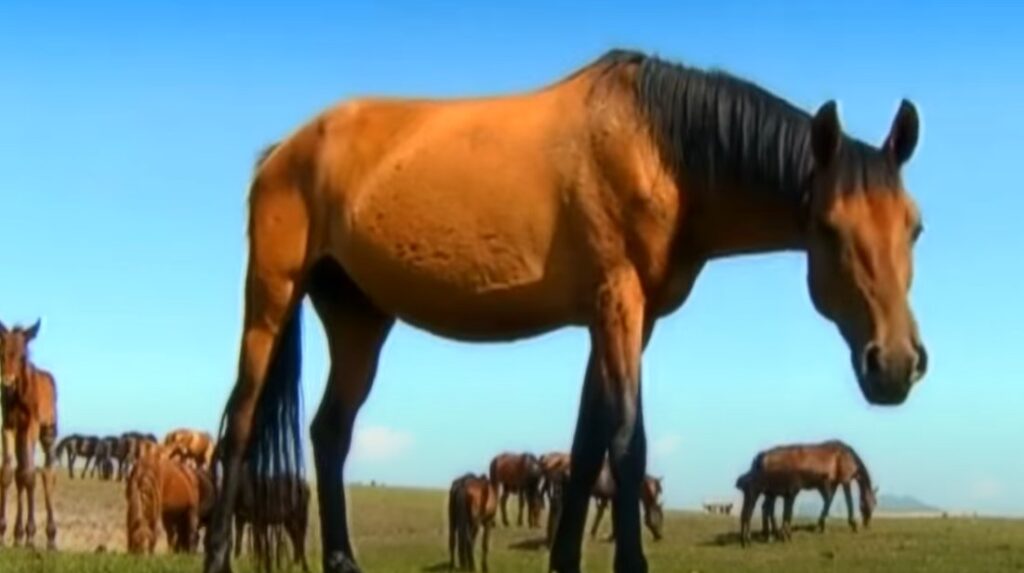
- Height: 58 inches
- Weight: Unknown
- Characteristics: Straight profile, compact, light head, deep chest
Yili horses originate from Northwestern Xinjiang province, where they’re mainly regarded as a livestock breed. The native residents of this area breed this animal, primarily for food. They use it for meat production and harvest their milk.
In the past though, the Yili horse breed was rarely used as a source of food. In fact, it served as a trotting horse.
Unfortunately, the locals needed a new source of food. So, they decided to improve its traits, transforming it into more of a draft horse.
Yili horses are still used for recreational riding. But in Xinjiang, their native home, they’re bred for their meat.
7. Tibetan Pony

- Height: 49 inches
- Weight: Unknown
- Characteristics: straight profile, prominent jaw line, deep chest, straight shoulder, strong joints and legs
China is also home to some famous pony breeds, such as the Tibetan Pony.
Tibetan Ponies are named after the region where they were developed, Tibet. Legend has it that the breed descends from either the Mongolian horses or another ancient breed.
However, another school of thought is that breeds from this region have remained pure bred for over ten centuries.
Although the Tibetan Pony breed is small, it’s a stronger horse than many assume it to be. This explains why it’s used as a draft horse. And, this robustness is not the only thing that these ponies are known for.
Since the Tibetan Pony has spent most of its life in these mountainous regions, it developed astounding sure-footedness. This makes the pony breed suitable for agricultural purposes and pack work.
8. Guizhou Pony
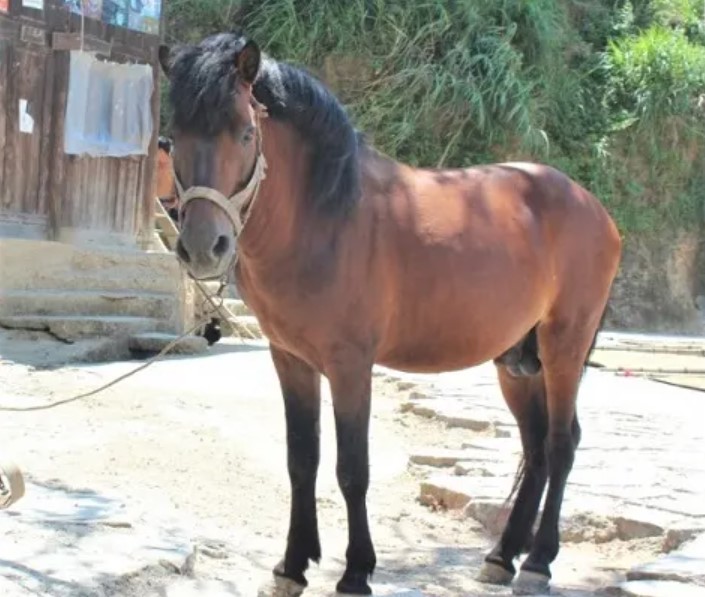
- Height: 40 to 45 inches
- Weight: 584 lbs.
- Characteristics: Short and low-set body, proportionately-formed head, slightly sloped shoulder
The Guizhou is another pony breed that hails from China, and it’s existed since 800 BC. It gets its name from the area it was developed in, Guizhou Province of China. Initially, these ponies were bred for agricultural work.
But as time went by traders started exchanging salt and horses. Due to this, the Guizhou Pony gained popularity as a trading item.
The Guizhou Pony has managed to retain its purity as a breed. This is primarily because attempts to crossbreed it with other Chinese horse breeds have proved futile.
9. Balikun Horse
- Height: 49 to 56 inches
- Weight: Unknown
- Characteristics: Thick, short neck, robust legs, powerful quarters, and a low-set tail
The specific origins of the Balikun horse remain unknown. However, it’s rumored that it originated from the Kazakh and Mongolian horses.
What’s known for sure is the fact that Balikun horses are a light breed. But, their powerful hindquarters and muscled frames make them excellent candidates for draft work.
Also, Balikun horses grew in very rough conditions- an aspect that helped them sure-footedness. As a result, they’re also used for heavy pack work.
10. Baise horse
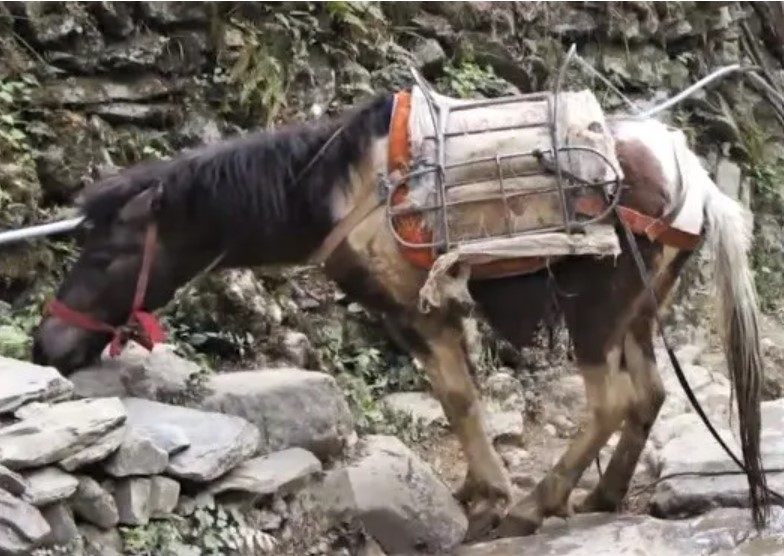
- Height: 45 to 48 inches
- Weight: Unknown
- Characteristics: Small body profile, heavy head, medium-long neck, and well-developed legs
This breed traces its roots to the Guangxi region, a mountainous terrain located south of China. Similar to other Chinese breeds, the Baise horse is pretty small. In fact, its size resembles a pony more than a full-size or large horse breed.
However, don’t let its small size fool you. The Baise horse breed is very hardy and athletic, which stems from the fact that it grew in harsh conditions. Its sturdy hooves and legs enable it to handle the rough terrain of the Guangxi region.
A versatile species, Baise horses are used mainly as pack horses, for recreational riding and in traditional weddings.
11. Yunnan
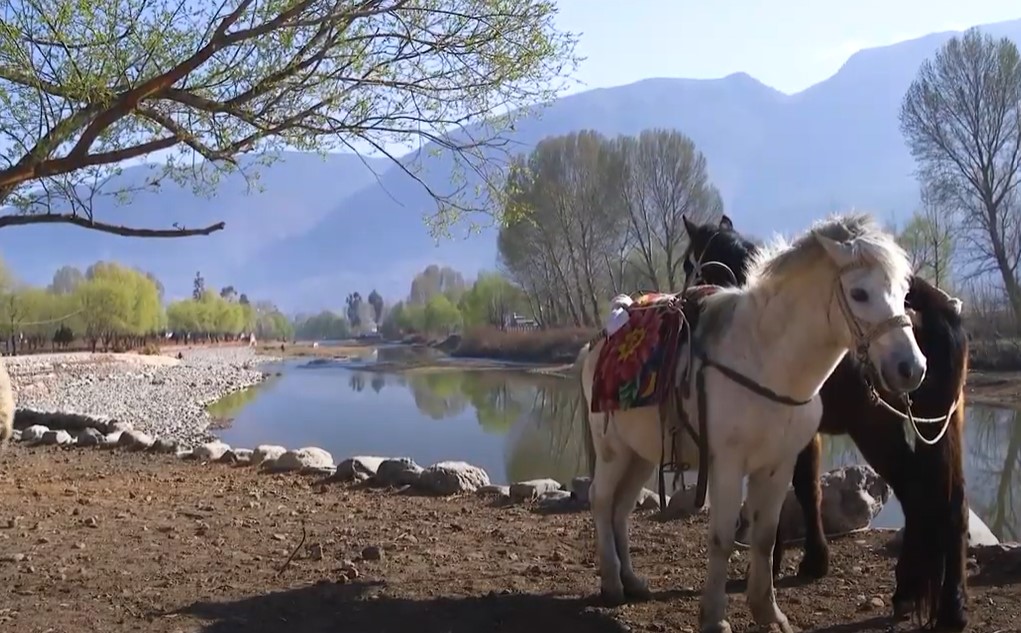
- Height: 44 to 45 inches
- Weight: Unknown
- Characteristics: Short back, straight shoulder, strong hooves, dry and muscular legs
The Yunnan horse traces its roots to the Wuron Mountains in China. It’s an ancient stock with a long history dating all the way back to 285 BC.
A fun fact about Yunnan horses is that they’re pure bred. Breeders achieved this by keeping it away from external influences. And though they have a small profile, they were initially bred to pull carts and chariots.
12. Riwoche Horse
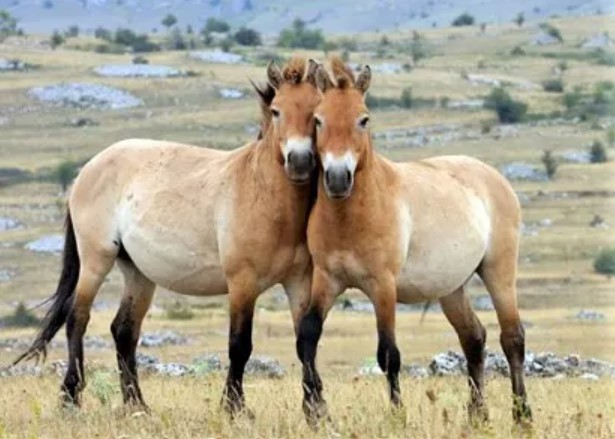
- Height: 48 inches
- Weight: 661 lbs.
- Characteristics: Dun coat color with an angular body, flat forehead, tiny jaws and ears, upright mane
Until recently, the Riwoche horse wasn’t recognized officially outside of China. In fact, it only became known when a group of explorers guided by Michel Peisse, bumped into the breed in the rough terrain of northeast Tibet.
This breed is easy to identify through its compact body, straight mane and primitive markings. This makes it look very similar to the Przewalski’s horses. In fact, the Riwoche horse was thought to be the missing link between ancient and modern horses. But this was later proven to be false.
Riwoche horses are an important part of the local economy. The Bon-Po tribe uses these horses for riding and transportation. But when it’s not in use, the breed is allowed to roam in the wild.
13. Heihe Horse
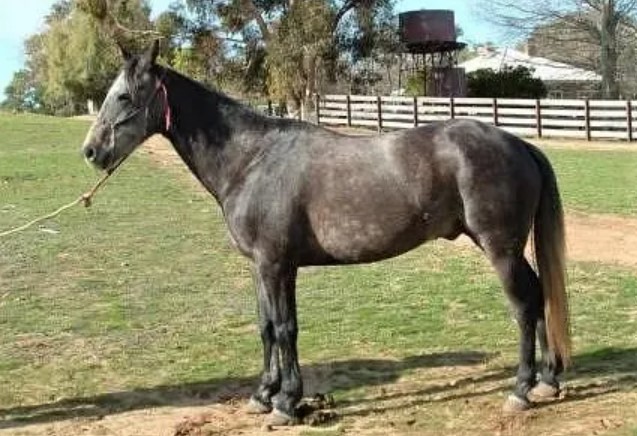
- Height: 57 to 61 inches
- Weight: Unknown
- Characteristics: Sturdy legs, medium head and neck, stocky body
Heihe horses were developed in the Heilongjiang River basin, which is situated along the Russian border. They are a hardy breed revered for their capability to put up with hot summers, frosty winters and rugged terrain.
Produced by crossing Mongolian and local Soulun stock, the Heihe horse breed is fairly recent. It only became an official breed in 1963. On average, the Heihe horse breed stands between 57 inches and 61 inches.
Other notable features of the breed include muscular bodies, medium-sized heads and necks, and strong legs. With such traits, these breeds are suitable for driving, farm and pack work.
14. Lijiang
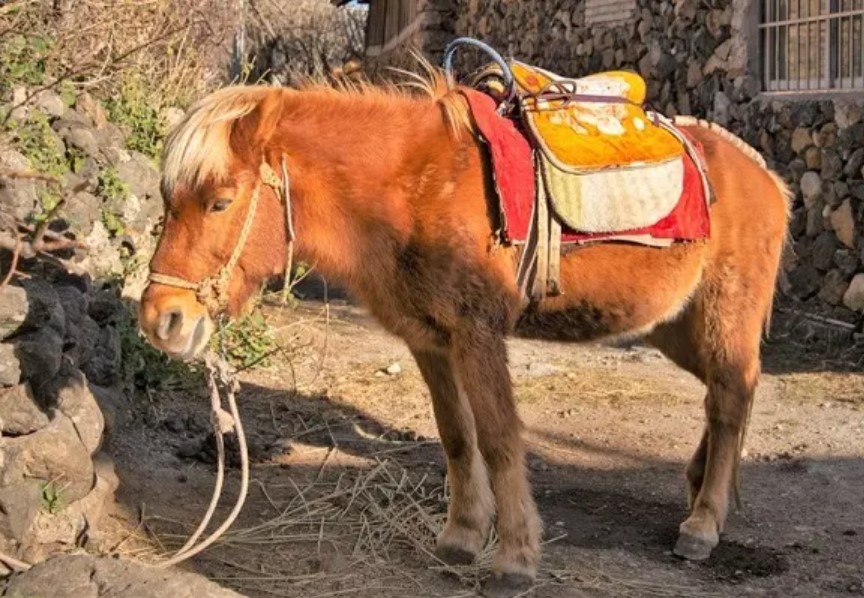
- Height: 49 inches
- Weight: Unknown
- Characteristics: Strong, stocky bodies and come in chestnut, gray or bay colors
The Lijiang horse is a pretty unique breed as it’s only produced in the Lijiang District of China. Following World War II, the locals realized that they didn’t have horse breeds robust enough to serve as a means of transport.
So they decided to cross this Pony with other horse breeds. Examples of horses used in the cross were the Ardennes (a French horse breed), Hequ, Yili, Kabarda among other breeds. The result was a sturdier horse mixed horse breed capable of transporting an array of things.
Other Chinese Breeds Worth Mentioning
Other notable Chinese breeds are:
- Jielin
- Hequ
For even more from around the globe see our list of German breeds and horse breeds from Italy.
FAQs
Are there horses in China?
Yes, there are. Whether you’re looking for a full-size or pony, you’re guaranteed of finding a wide range of horse breeds in China.
Conclusion
The Chinese natives came together to form the Xia Dynasty around 2070 BCE, resulting in one of the world’s oldest civilizations. As such, it’s not surprising that it has a rich equine history that dates as far back as 1600 BC.
Over the years, a significant number of breeds have been produced, refined and lost. Some breeds have been in existence for numerous centuries while others were created just recently. Examples of the most popular Chinese horse breeds include Baise, Balikun, Ferghana, Riwoche and Yili horses.
